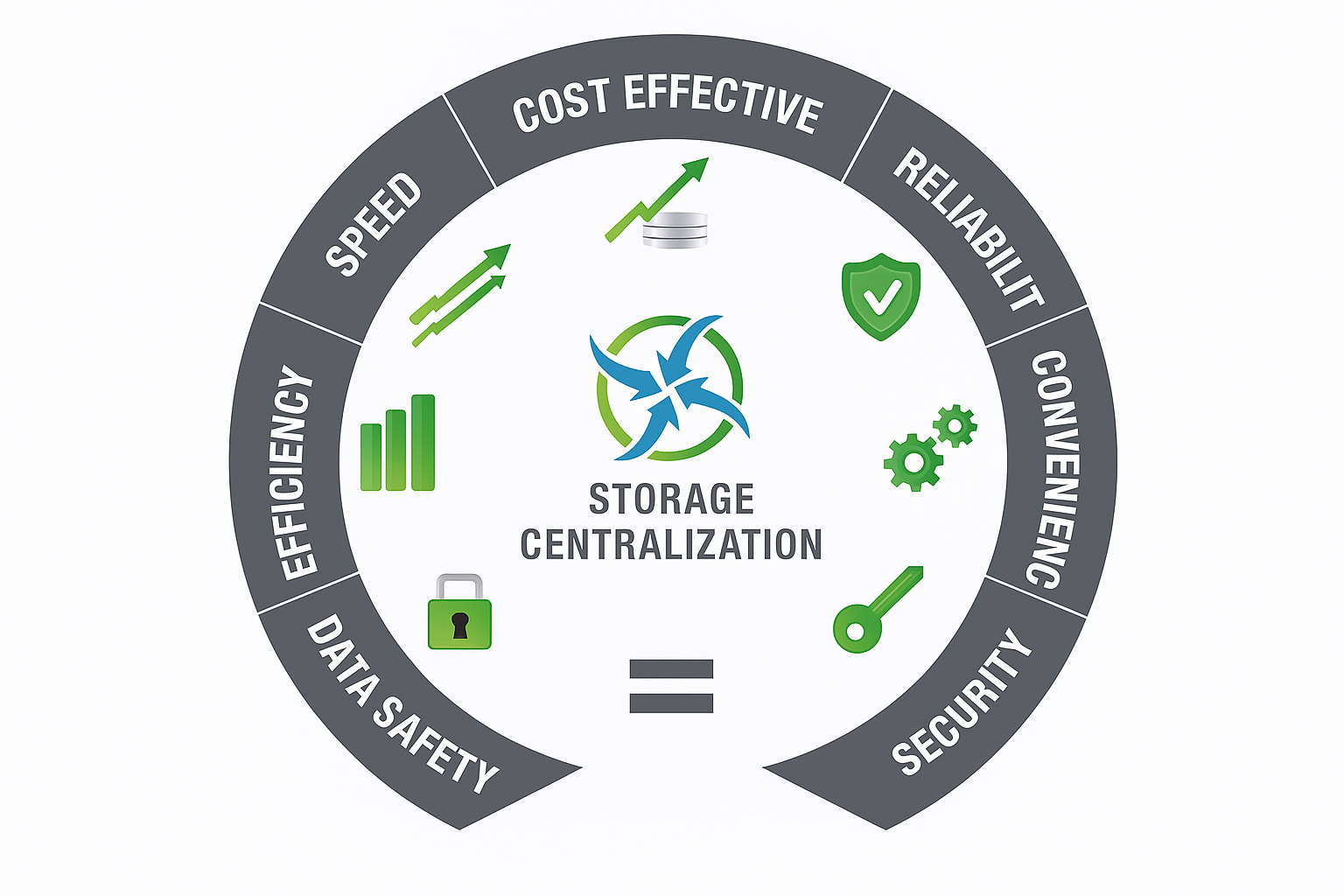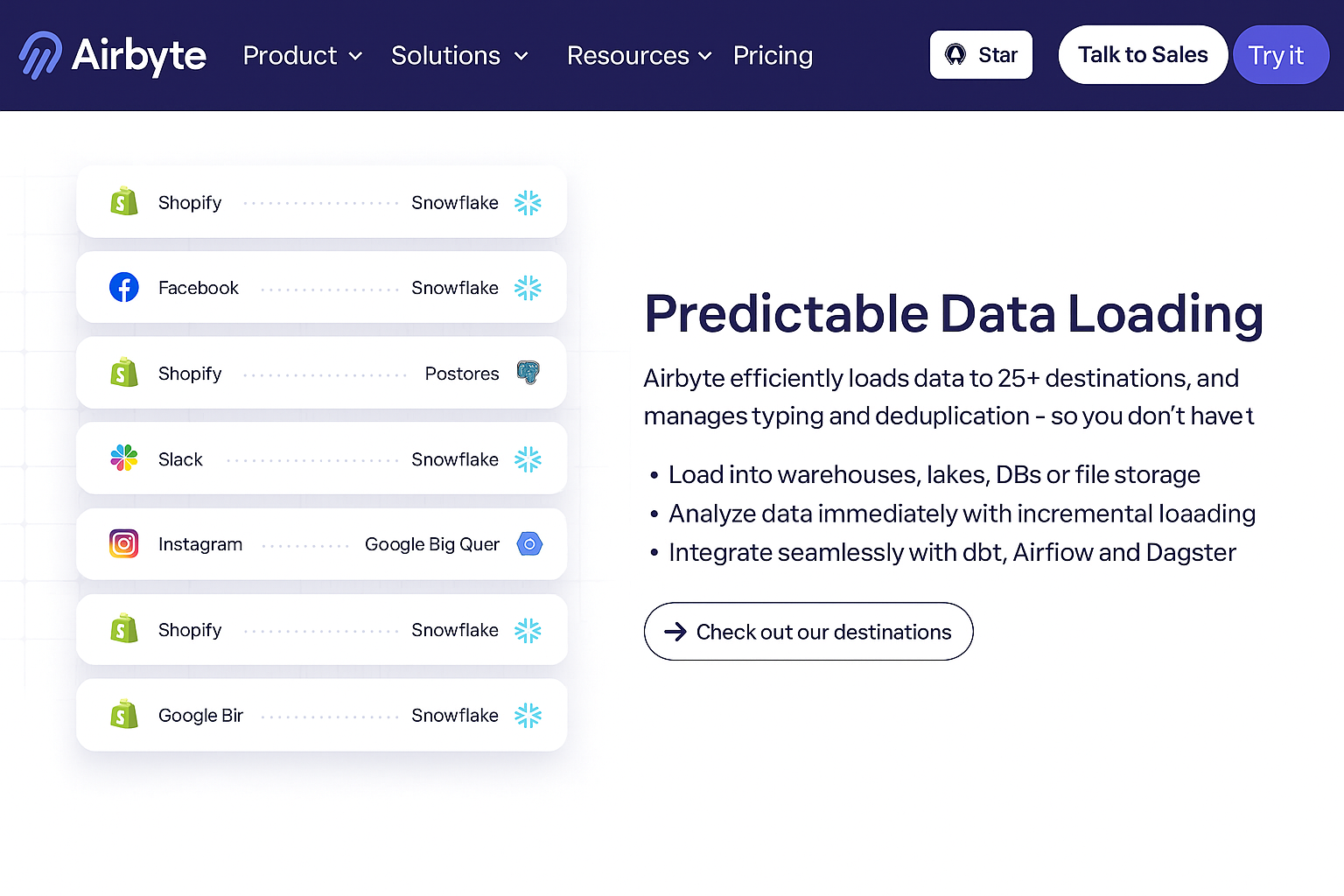Data Centralization: Definition & Benefits
Summarize this article with:
✨ AI Generated Summary
Data centralization consolidates organizational data from multiple sources into a single unified repository, enhancing consistency, accessibility, and governance. Key benefits include improved decision-making, streamlined processes, better data quality, and advanced analytics capabilities. Implementation involves data inventory, goal setting, architecture selection, governance policies, migration, security, and continuous monitoring, with modern approaches like data lakehouses, data mesh, and AI-driven automation further optimizing centralized data management.
Many organizations struggle with data scattered across dozens of systems, where marketing metrics live in isolated spreadsheets while financial records occupy separate accounting systems. This fragmentation creates operational inefficiencies, contradictory datasets, and missed opportunities for competitive advantage. Research reveals that organizations with unified data repositories experience measurable improvements in decision-making speed and operational efficiency, while those maintaining siloed data structures struggle to leverage emerging technologies like artificial intelligence and real-time analytics.
Data centralization emerges as the strategic solution to these challenges, transforming scattered information into a cohesive, accessible resource that drives business value. This comprehensive guide explores the centralization definition, implementation strategies, and modern approaches that position organizations for success in an increasingly data-driven marketplace.
What Is the Complete Centralization Definition?
Data centralization refers to consolidating all of your organization's data from various sources—such as CRMs and analytics tools—into a single unified repository. This central repository can reside in a physical location, in a cloud-based storage system, or in a combination of both.
The centralization definition encompasses more than simple data aggregation. It represents a strategic approach to creating a single source of truth for all data requirements, ensuring consistency, accuracy, and organization-wide accessibility. Modern centralization also includes establishing unified governance frameworks, standardized access protocols, and automated quality controls that maintain data integrity across all organizational functions.
With data centralization you create a single source of truth for all data requirements, ensuring consistency, accuracy, and organization-wide accessibility. It also helps you keep track of everything within your company, leading to better collaboration, resource management, and improved business decisions. Furthermore, it enhances data governance by improving security and facilitating efficient analysis.
Contemporary centralization extends beyond traditional data warehouses to encompass cloud-native architectures, real-time processing capabilities, and AI-driven automation. This evolution addresses the growing complexity of modern data ecosystems while maintaining the core principle of unified access to organizational information.
A study by Treasure Data found that companies using data centralization as part of their customer-data strategy reported improvements in efficiency and increases in business-growth opportunities—emphasizing the impact data centralization can have on business success.
What Are the Key Benefits of Data Centralization?

- Strategic decision-making – Readily available, cohesively structured data provides a holistic view of the organization and enables actionable insights.
- Improved data accessibility – Teams no longer need to navigate disparate systems to find relevant information.
- Enhanced analysis & reporting – A unified repository lays the groundwork for advanced analytics (predictive modeling, ML) and simplifies KPI reporting.
- Improved data quality – A central data governance framework enforces consistency across the organization.
- Simplified business processes – Eliminating silos reduces redundancies, improves collaboration, and drives operational efficiency.
- Streamlined data management & security – Centralized storage simplifies backups, updates, maintenance, and the enforcement of robust security measures.
How Do You Implement Data Centralization?
Follow the steps below to start centralizing your organization's data and streamlining business workflows:
1. Inventory Your Data Infrastructure
Identify all existing data sources (databases, spreadsheets, CRMs), their formats, and current data-flow patterns.
2. Define Your Goals
Clarify what you want to achieve (better reporting, customer insights, operational optimization).
3. Choose Your Data Architecture
Select a central storage solution—data warehouse, data lake, or hybrid—based on data volume, structure, scalability, and other requirements.
4. Define Data Governance Policies
Establish guidelines for data usage, access authorization, quality criteria, and security protocols.
5. Execute Data Migration Strategically
Migrate existing data to the new system using ETL/ELT or custom solutions, aiming for minimal disruption.
6. Select Suitable Centralization Tools
Airbyte is one such tool, offering:
- A library of over 600 pre-built connectors plus a Connector Development Kit for custom sources.
- An ELT approach that quickly moves raw data to your chosen destination.
- Integration with dbt for complex transformations.
- Automated schema-change management and Change Data Capture.
- Enterprise-grade security features.
- Flexible deployment options supporting cloud-native, hybrid, and on-premises architectures.
Refer to the official documentation for details.

7. Ensure Data Security
Protect data with encryption, access controls, and regular backups, while complying with relevant privacy regulations.
8. Continuously Monitor and Adapt
Track data quality, system performance, and user access to detect issues early.
How Do Modern Hybrid Architectures Transform Data Centralization?
Data Lakehouse Architecture
The Data Lakehouse architecture merges the cost-effectiveness of data lakes with the governance and performance of data warehouses.
Data Mesh and Federated Governance
Data Mesh architectures complement centralization by implementing domain-specific data ownership while maintaining federated governance standards.
Data Fabric Integration
Data Fabric architectures create virtualized centralization layers that provide unified access to distributed data sources without requiring physical consolidation.
What Role Does AI Play in Automated Data Governance?
Automated Quality Assurance
Machine learning models continuously monitor data quality within centralized systems, detecting anomalies and potential errors.
Self-Healing Data Pipelines
Advanced centralization platforms implement AI-powered automation that can diagnose and resolve common data-pipeline issues without human intervention.
Predictive Governance Optimization
AI systems analyze usage patterns, access logs, and performance metrics to optimize centralized data-governance policies.
What Are the Key Differences Between Data Centralization and Data Distribution?

Centralized data resides in one place, offering easier management, faster queries, and a clear single source of truth. Distributed data is stored across multiple locations, closer to where it is used, offering improved scalability and fault tolerance. Many organizations adopt hybrid approaches that combine centralized governance with distributed data placement.
How Can You Ensure Long-Term Success with Data Centralization?
Regular assessment of centralized architectures ensures they continue meeting business requirements as data volumes, user needs, and regulatory environments evolve. By following the steps outlined above—and leveraging integration platforms such as Airbyte—organizations can transition smoothly to a centralized model.
FAQs
Why can't data centers be decentralized?
- Data fragmentation – Multiple centers make consistency and coherence difficult.
- Data-security risks – Each center represents a separate attack surface.
- Inefficient resource utilization – Decentralized centers duplicate infrastructure, driving up costs.
What are the best options for centralized data-storage management for a small or medium-sized business?
- Network-attached storage (NAS) – Cost-effective and easy to configure.
- Cloud storage – Flexible, scalable, and accessible from any internet-connected device.
- Storage area network (SAN) – High-performance storage for demanding workloads.
What is the difference between a master and a centralized database system?
A centralized database stores all data in one location, accessible by multiple users. A master database refers to a primary server within a replication setup that handles write operations and propagates changes to replica databases. For more, see master–slave structure.

.webp)
